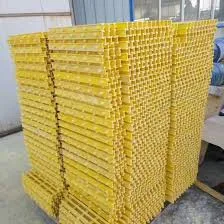
-
 Afrikaans
Afrikaans -
 Albanian
Albanian -
 Amharic
Amharic -
 Arabic
Arabic -
 Armenian
Armenian -
 Azerbaijani
Azerbaijani -
 Basque
Basque -
 Belarusian
Belarusian -
 Bengali
Bengali -
 Bosnian
Bosnian -
 Bulgarian
Bulgarian -
 Catalan
Catalan -
 Cebuano
Cebuano -
 China
China -
 China (Taiwan)
China (Taiwan) -
 Corsican
Corsican -
 Croatian
Croatian -
 Czech
Czech -
 Danish
Danish -
 Dutch
Dutch -
 English
English -
 Esperanto
Esperanto -
 Estonian
Estonian -
 Finnish
Finnish -
 French
French -
 Frisian
Frisian -
 Galician
Galician -
 Georgian
Georgian -
 German
German -
 Greek
Greek -
 Gujarati
Gujarati -
 Haitian Creole
Haitian Creole -
 hausa
hausa -
 hawaiian
hawaiian -
 Hebrew
Hebrew -
 Hindi
Hindi -
 Miao
Miao -
 Hungarian
Hungarian -
 Icelandic
Icelandic -
 igbo
igbo -
 Indonesian
Indonesian -
 irish
irish -
 Italian
Italian -
 Japanese
Japanese -
 Javanese
Javanese -
 Kannada
Kannada -
 kazakh
kazakh -
 Khmer
Khmer -
 Rwandese
Rwandese -
 Korean
Korean -
 Kurdish
Kurdish -
 Kyrgyz
Kyrgyz -
 Lao
Lao -
 Latin
Latin -
 Latvian
Latvian -
 Lithuanian
Lithuanian -
 Luxembourgish
Luxembourgish -
 Macedonian
Macedonian -
 Malgashi
Malgashi -
 Malay
Malay -
 Malayalam
Malayalam -
 Maltese
Maltese -
 Maori
Maori -
 Marathi
Marathi -
 Mongolian
Mongolian -
 Myanmar
Myanmar -
 Nepali
Nepali -
 Norwegian
Norwegian -
 Norwegian
Norwegian -
 Occitan
Occitan -
 Pashto
Pashto -
 Persian
Persian -
 Polish
Polish -
 Portuguese
Portuguese -
 Punjabi
Punjabi -
 Romanian
Romanian -
 Russian
Russian -
 Samoan
Samoan -
 Scottish Gaelic
Scottish Gaelic -
 Serbian
Serbian -
 Sesotho
Sesotho -
 Shona
Shona -
 Sindhi
Sindhi -
 Sinhala
Sinhala -
 Slovak
Slovak -
 Slovenian
Slovenian -
 Somali
Somali -
 Spanish
Spanish -
 Sundanese
Sundanese -
 Swahili
Swahili -
 Swedish
Swedish -
 Tagalog
Tagalog -
 Tajik
Tajik -
 Tamil
Tamil -
 Tatar
Tatar -
 Telugu
Telugu -
 Thai
Thai -
 Turkish
Turkish -
 Turkmen
Turkmen -
 Ukrainian
Ukrainian -
 Urdu
Urdu -
 Uighur
Uighur -
 Uzbek
Uzbek -
 Vietnamese
Vietnamese -
 Welsh
Welsh -
 Bantu
Bantu -
 Yiddish
Yiddish -
 Yoruba
Yoruba -
 Zulu
Zulu
FRP Chimney Design and Installation for Industrial Applications and Efficiency
FRP Chimney Construction and Installation for Industrial Applications
FRP (Fiberglass Reinforced Plastic) chimneys are increasingly becoming a preferred choice in industrial environments due to their exceptional durability, lightweight properties, and resistance to corrosion. Unlike traditional materials such as steel or concrete, FRP offers a range of advantages that can greatly enhance the efficiency and longevity of chimney systems. This article explores the pivotal aspects of FRP chimney construction and installation specifically for industrial applications.
Advantages of FRP Chimneys
One of the primary benefits of FRP chimneys is their resistance to corrosive elements commonly found in industrial emissions. Industries such as chemical manufacturing, waste management, and power generation often deal with harsh substances that can deteriorate conventional chimney materials. FRP's inert nature allows it to withstand chemical attacks, ensuring a longer lifespan and reduced maintenance costs.
Another significant advantage of FRP is its lightweight composition. Traditional chimneys can be cumbersome and require extensive structural support. In contrast, FRP materials are significantly lighter, which simplifies the design and installation processes. This not only reduces the demand on structural supports but also lowers transportation and installation costs.
Additionally, FRP chimneys can be customized to meet specific industrial requirements. They can be engineered to accommodate varying heights, diameters, and shapes, allowing for flexibility in design to meet specific project needs. Such customization is vital for industries with unique operational processes or site constraints.
Construction Process
The construction of FRP chimneys involves several key steps to ensure that they meet both industry standards and operational requirements. Initially, a detailed analysis of the site and the emissions produced must be conducted. This assessment guides the design process, enabling engineers to specify the correct grade of FRP that can withstand the environmental stresses.
frp chimney construction and installation for industrial and

Once the design is finalized, the next step involves the fabrication of the chimney sections, typically accomplished through a process called filament winding or resin transfer molding. These methods allow for the creation of strong, seamless parts that enhance both the durability and performance of the chimney.
After the sections are fabricated, they undergo quality checks to ensure compliance with industry standards. This includes testing for mechanical strength, thermal performance, and resistance to chemical exposure. Only after passing these rigorous tests can the sections be transported to the installation site.
Installation
The installation of FRP chimneys is a critical phase that demands precision and adherence to safety protocols. Due to their lightweight nature, installation can be performed with standard lifting equipment, which reduces the need for heavy machinery. This aspect not only saves time but also minimizes potential safety hazards.
Before installation, it is essential to prepare the foundation, ensuring it can support the chimney and adhere to local regulatory requirements. Once the foundation is set, the chimney sections are assembled, often utilizing specialized adhesives or mechanical fastening systems designed for FRP materials.
Final touches such as the application of protective coatings or liners may be added based on the specific requirements of the emissions being extracted. This step enhances the lifespan and efficiency of the chimney.
Conclusion
In summary, FRP chimney construction and installation present a modern, effective solution for various industrial applications, characterized by corrosion resistance, lightweight properties, and design flexibility. As industries continue to seek efficient and sustainable methods for managing emissions, FRP chimneys stand out as a viable option. Their advantages not only lead to improved operational effectiveness but also contribute to environmental safety, making them a vital component in modern industrial infrastructure.
Latest news
-
Exploring the Benefits of Top Hammer Drifter Rods for Enhanced Drilling PerformanceNewsJun.10,2025
-
High-Precision Fiberglass Winding Machine for GRP/FRP Pipe Production – Reliable & Efficient SolutionsNewsJun.10,2025
-
FRP Pipes & Fittings for Shipbuilding - Corrosion-Resistant & LightweightNewsJun.09,2025
-
Premium FRP Flooring Solutions Durable & Slip-ResistantNewsJun.09,2025
-
Premium Fiberglass Rectangular Tanks Durable & Lightweight SolutionNewsJun.09,2025
-
Tapered Drill String Design Guide Durable Performance & UsesNewsJun.09,2025









